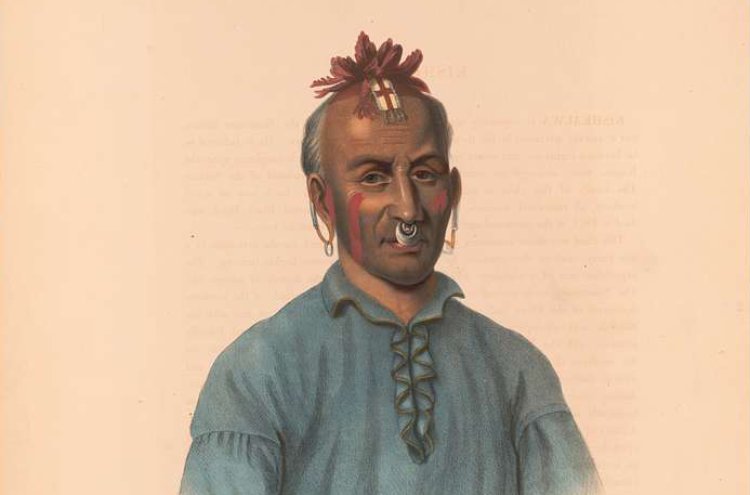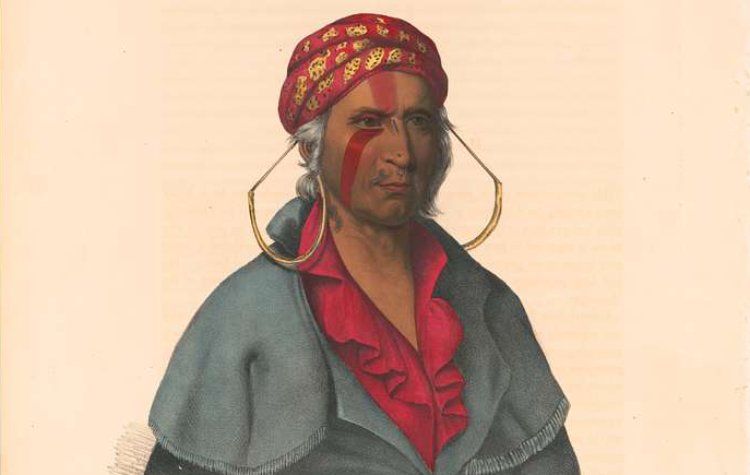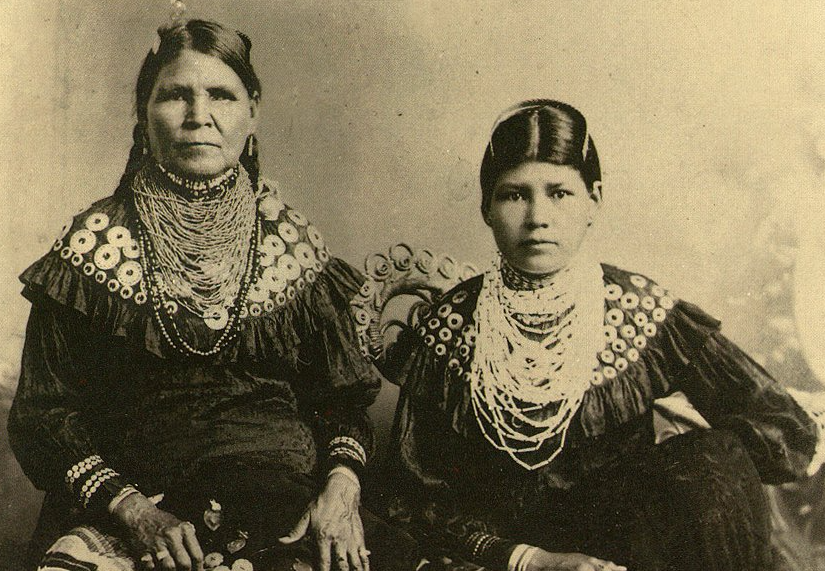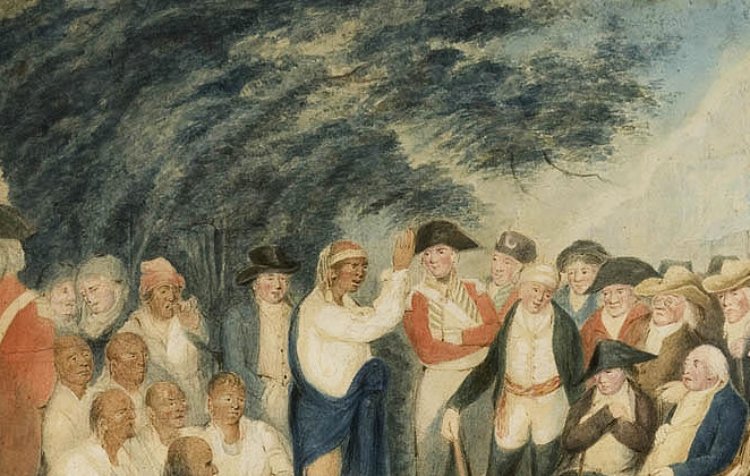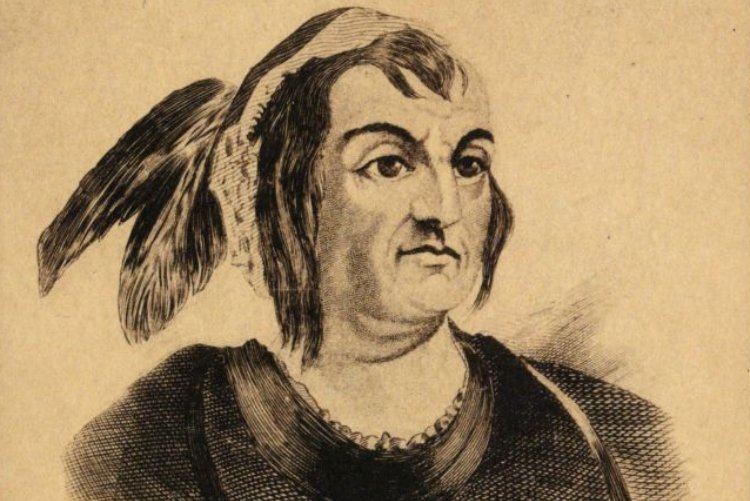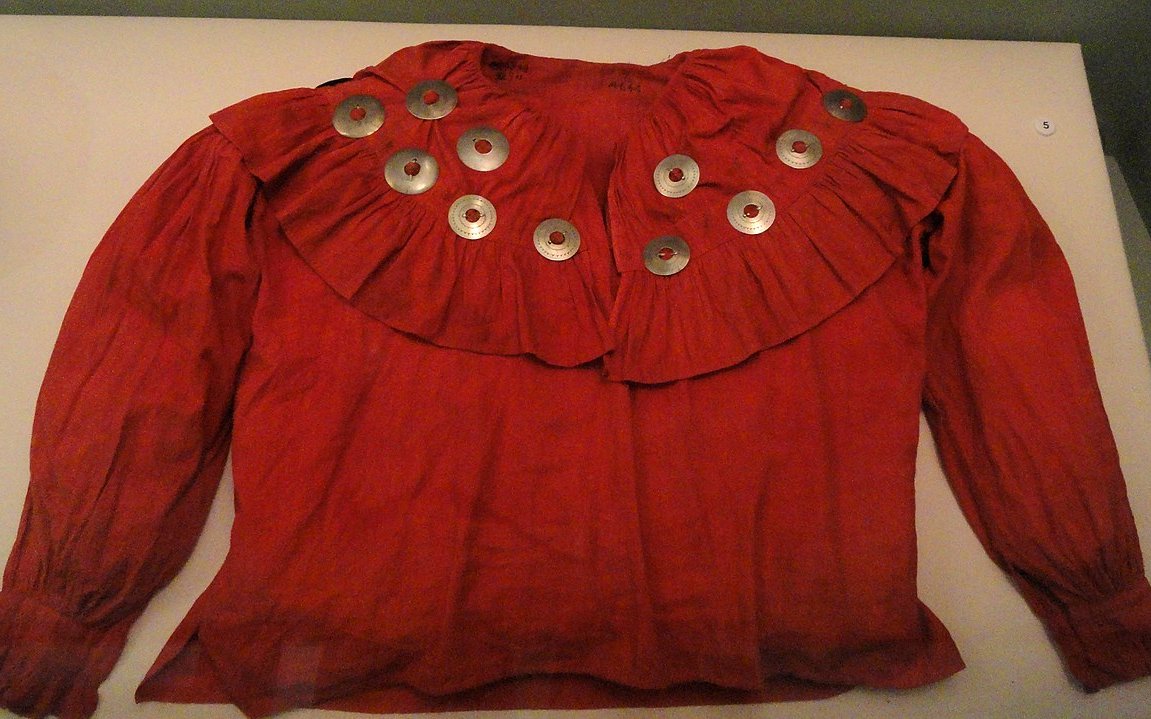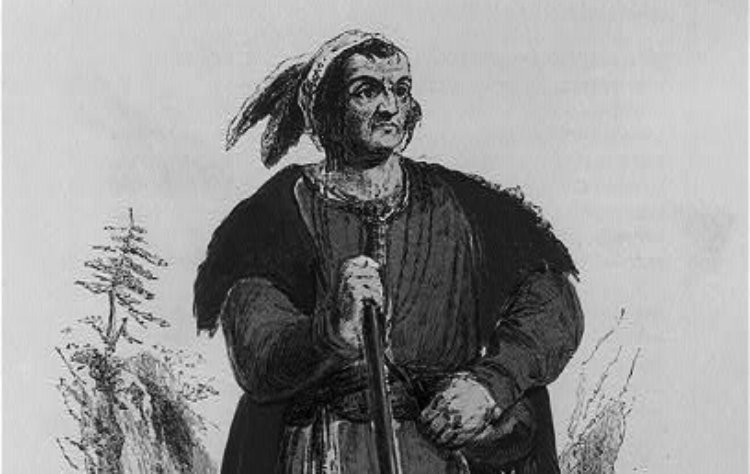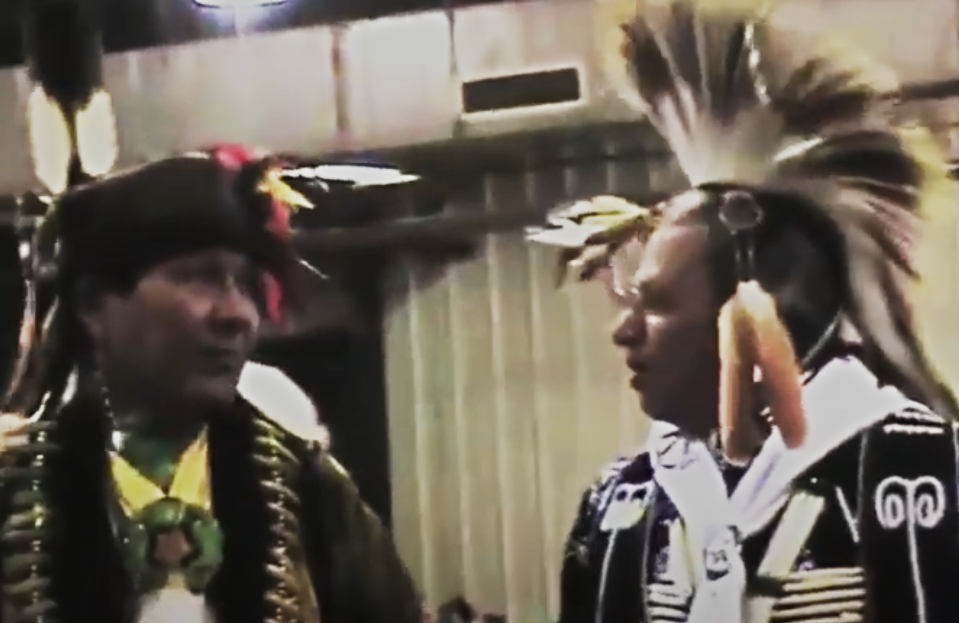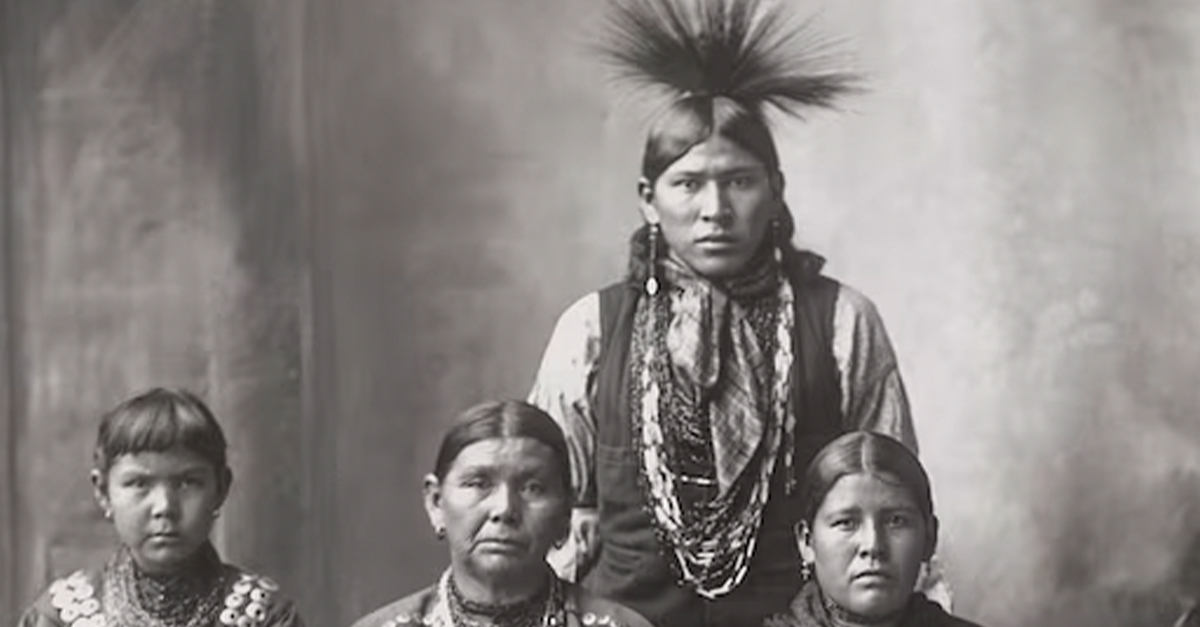How The Shawnee Have Survived In North America For Centuries
The Shawnee are a Native American tribe composed of three federally-recognized tribes in the United States, all located in Oklahoma. But for the past three centuries, they were hounded from Ohio, Maryland, Delaware, and Pennsylvania by colonial settlers. We'll examine the fascinating history of the Shawnee people and their modern state of affairs today.
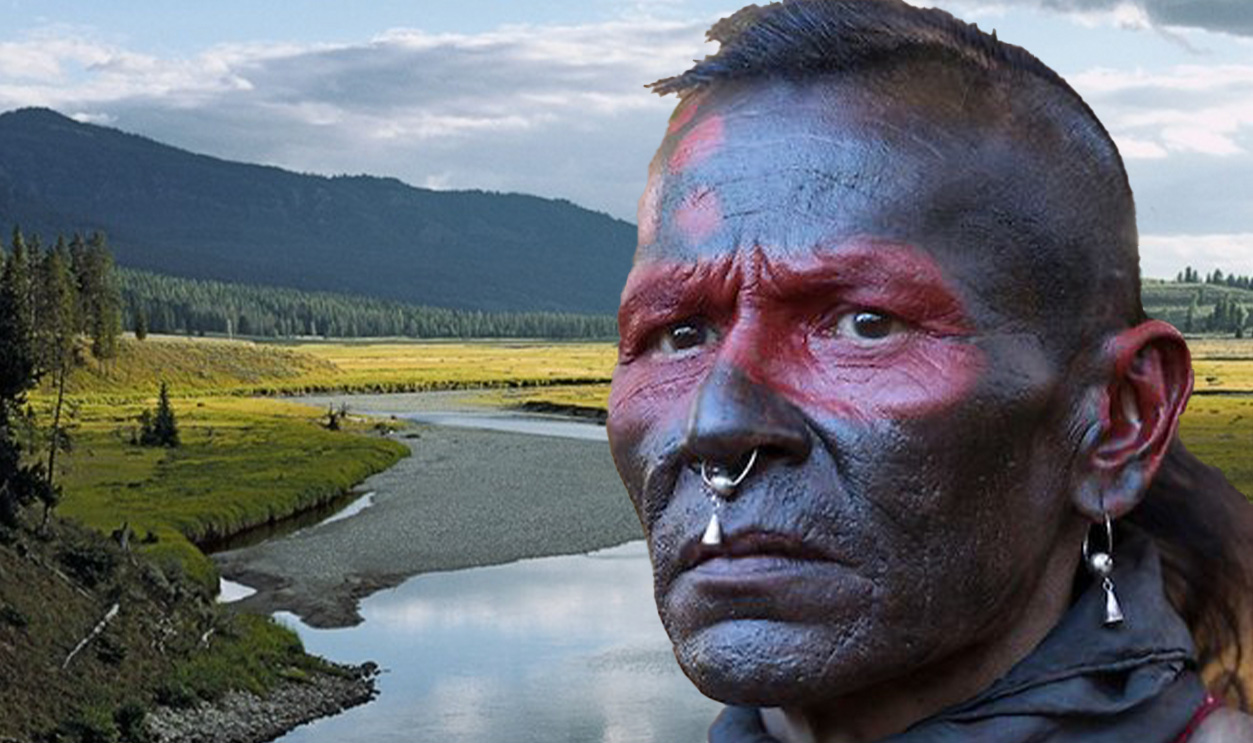
The Origins Of The Shawnee
The Shawnee's origins are somewhat unclear, but they're considered ancestrally related to the Fort Ancient peoples, a Native American culture that inhabited North America between 1000 and 1750 CE. The precise fate of these Fort Ancient peoples is unknown, although it's speculated that much of Shawnee's predecessors were wiped out by infectious diseases brought by the Spanish in the 16th century.
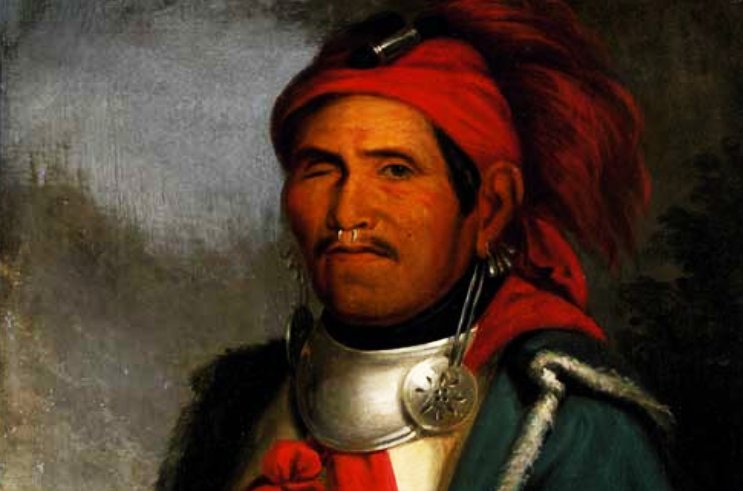 Charles Bird King, Wikimedia Commons
Charles Bird King, Wikimedia Commons
The Etymology Of Their Tribal Name
The name first arose from the history books around 1670. Spelled "sawanow", it means "person from the south" in the Alongquian language, which may provide some clues as to where the Shawnee came from before they settled in what is now southern Ohio.
 Heironymous Rowe, CC BY-SA 3.0, Wikimedia Commons
Heironymous Rowe, CC BY-SA 3.0, Wikimedia Commons
Evidence Of Shawnee Contact With Europeans At Fort Ancient
The aptly-named Lower Shawneetown was an 18th-century village located within an archaeological district in Kentucky, where the Shawnee were thought to have established trade relations with European settlers many centuries prior. Evidence of this contact includes glass fragments, iron, brass, and copper, which were not present in the area prior to European contact.
 National Gallery of Art, Picryl
National Gallery of Art, Picryl
A Horticultural, Sedentary Way Of Life
Despite the disruption to their societies by way of diseases, the earliest evidence of Shawnee life was found at Madisonville archaeological site, where small houses and mound-earth dwellings, along with evidence of gardening, indicate that the Shawnee lived a mainly isolated and horticultural existence prior to European contact.
The Relationship Between The Shawnee And Lenape Tribes
Like many other Indigenous tribes, the Shawnee believed in their interconnectedness with other tribes, especially the Lenape Tribe of Delaware. Like the Shawnee, the Lenape tribespeople spoke Algonquian, a now-rare language spoken in the Central US and south-central Canada. The Shawnee believed their linguistic brethren to be their cultural "grandfathers".
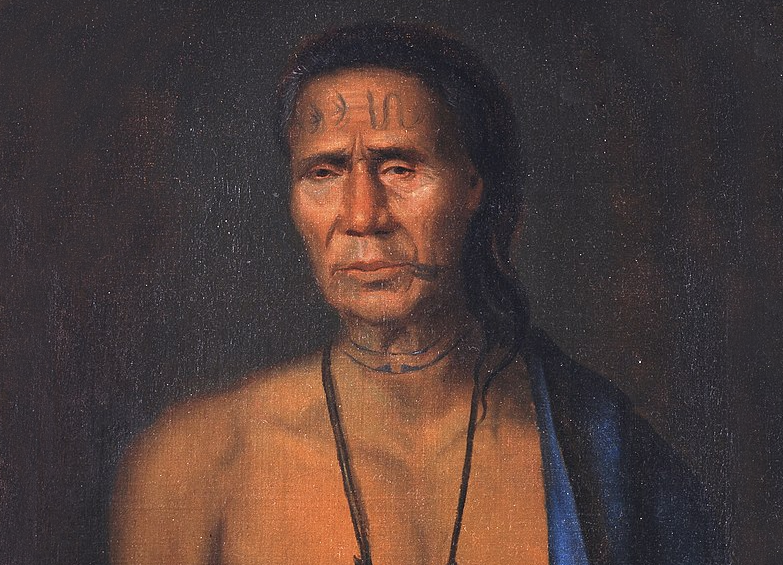 Gustavus Hesselius, Wikimedia Commons
Gustavus Hesselius, Wikimedia Commons
First Contact With The Europeans
It is thought that the Shawnee first encountered Europeans in the early 17th century. In particular, the Dutch colonial forces, as the name "Sawannew" appeared on a Dutch map in 1614, showing an area just east of the Delaware River. Other European encounters came later in the 17th century, as French explorers encountered Shawnee tribespeople along the Ohio River.
 George Inness, Wikimedia Commons
George Inness, Wikimedia Commons
Inter-Tribal Battles With The Iroquois
Unlike other Native tribes, who were all but exterminated by European contact, the first reports of violence from the Shawnee came when they faced off against the Iroquois in Kentucky and lost the battle against them for control over the hunting lands along the Ohio River. This would be one of many such battles throughout the 17th century.
 George Catlin, Wikimedia Commons
George Catlin, Wikimedia Commons
The Beaver Wars
Known as the Beaver Wars in the mid- to late 17th century, this series of conflicts saw the Shawnee face off against fellow Native American tribes, like the Haudenosaunee Confederacy, over control of hunting grounds alongside the Ohio River. This inter-tribal warfare led the Shawnee to abandon their encampments alongside the Ohio River, migrating to the Savannah River around 1670.
Forming Alliances With European Settlers
By the time the Shawnee set up their communities along the Savannah River, Georgia had already been conquered and occupied by English immigrants who'd settled in the region, known as the Carolina English. These people referred to the Shawnee as the "Savannah Indians". The Shawnee began trade relations and formed long-lasting alliances with the French and English alike.
 Unknown author, Wikimedia Commons
Unknown author, Wikimedia Commons
A Relationship Soured As Resistance To Colonialism Grows
As the Shawnee began to expand their territory in the early 18th century, they became known by the English settlers as the masters of trade, and began repairing and cultivating new relationships between their fellow tribespeople. Their language became the common language of trade and they established vast settlement areas.
The Shawnee Spread And Find A New Chief
Spreading themselves across much of the central United States, the Shawnee elected a chief to lead them for the first time. The requested a fearless Oneida war chief known as Carondawana and his wife, Madame Montour, a French-Canadian Algonquin woman who was known as an interpreter. This new chief and his wife saw further expansion of the Shawnee and more battles with the Iroquois Confederacy, who had been pushing further south.
 Roy da Vinci, Wikimedia Commons
Roy da Vinci, Wikimedia Commons
Trading Causes Social Problems
During the 1730s, despite significantly increased trade relations with their fellow Native American tribespeople and Europeans, the Shawnee had traded furs for weaponry and other European goods, including something that would lead to serious social problems, like addiction. This led to several Shawnee communities to ban trading with the Europeans altogether, leading to a forced migration of some 400 Shawnee from Pennsylvania to Ohio, escaping the bad influence of traders.
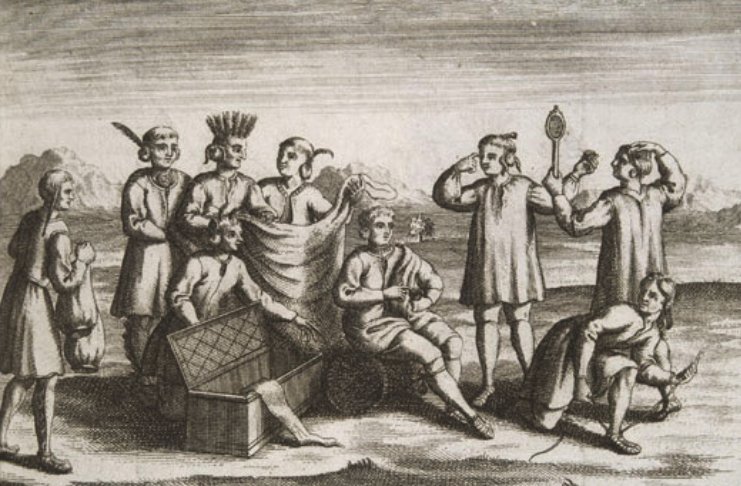 Bacqueville de La Potherie, Wikimedia Commons
Bacqueville de La Potherie, Wikimedia Commons
The Shawnee, Lenape, And Mingo Join Forces
As their original hunting grounds had been conquered by the Haudenosaunee Confederacy, the Shawnee, Lenape, and Mingo tribes had been oppressed by the Haudenosaunee, leaving them with the effective status of serfs. By the end of the century, the three tribes in the Ohio Country had joined forces, with the Shawnee and Lenape both speaking Algonquian, while the Mingo spoke an Iroquois dialect.
And Partake In The French-Indian Wars
The French and Indian Wars were a series of large-scale conflicts between the French and English for control over large portions of eastern Canada and the United States. As the Shawnee, along with dozens of other Native American tribes, became embroiled in the war from 1754 onwards, the Shawnee sided with the French until 1758.
 James Otto Lewis, Wikimedia Commons
James Otto Lewis, Wikimedia Commons
Switching Sides And Making Formal Peace With The English
The Shawnee officially made peace with the British in the Treaty of Easton. The treaty was designed to resolve the conflicts created by "the Walking Purchase", a large-scale British land purchase in 1737, wherein the Governor of Pennsylvania, William Penn, would purchase 1.2 million acres of land from the Lenape. In exchange for agreeing not to fight on the side of the French, Pennsylvania returned large swathes of land to the Iroquois (and therefore the Shawnee, who were under the banner of the Iroquois Confederacy).
 Unknown author, Wikimedia Commons
Unknown author, Wikimedia Commons
Pushed Westward And Unrepresented, The Shawnee Prepare To Fight
One of the consequences of the Treaty of Easton was that the British formally recognized the legal boundary between their territory and that of the Shawnee tribes, but this territory was not recognized by many European colonists, who continued to push into Shawnee tribal areas, angering the Shawnee and driving them closer to an all-out war with their former allies.
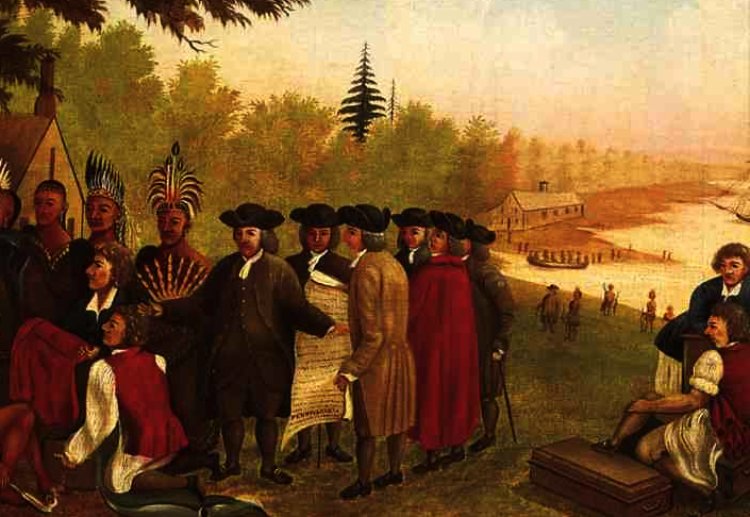 Edward Hicks, Wikimedia Commons
Edward Hicks, Wikimedia Commons
Lord Dunmore's War Of 1774
And so it began with Lord Dunmore's War of 1774, lasting from May through October of 1774. It was preempted by white settlement in Shawnee areas, prompting the 4th Earl of Dunmore, John Murray, to declare a state of war and call up the Virginia militia. Commonwealth forces routinely engaged the Shawnee in cross-river attacks, as the Shawnee fought for control over their lands on the south side of the Ohio River.
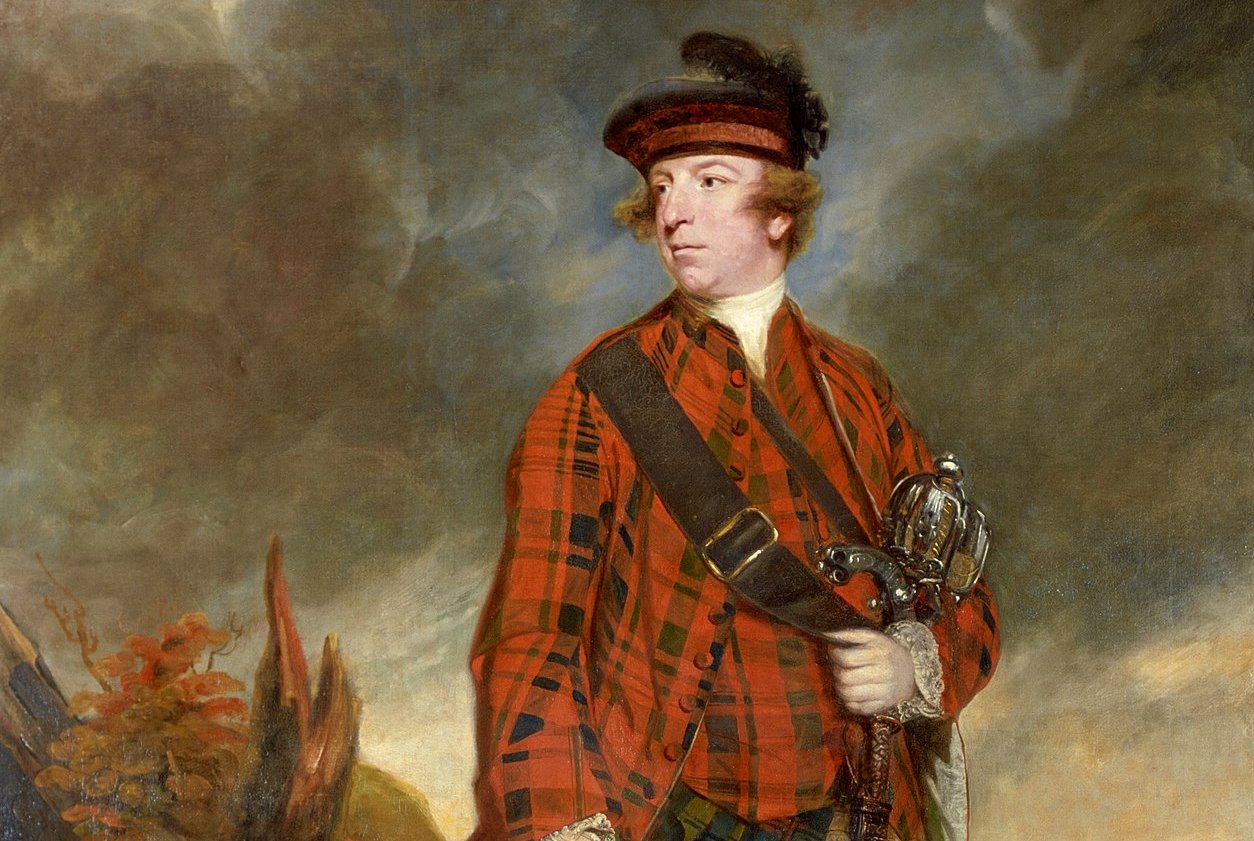 Google Cultural Institute, Wikimedia Commons
Google Cultural Institute, Wikimedia Commons
The Battle Of Point Pleasant
After five months of small-scale skirmishes, the Battle of Point Pleasant took place. Led by Shawnee chief Cornstalk, Shawnee warriors attacked Virginia militiamen who were advancing into Shawnee territory in the Ohio Valley. After an hours-long battle and being consistently flanked by the 1,000-strong company of militiamen, the Shawnee (numbering nearly half the British contingent) withdrew into the night, having lost Pukeshinwa, the father of Tecumseh.
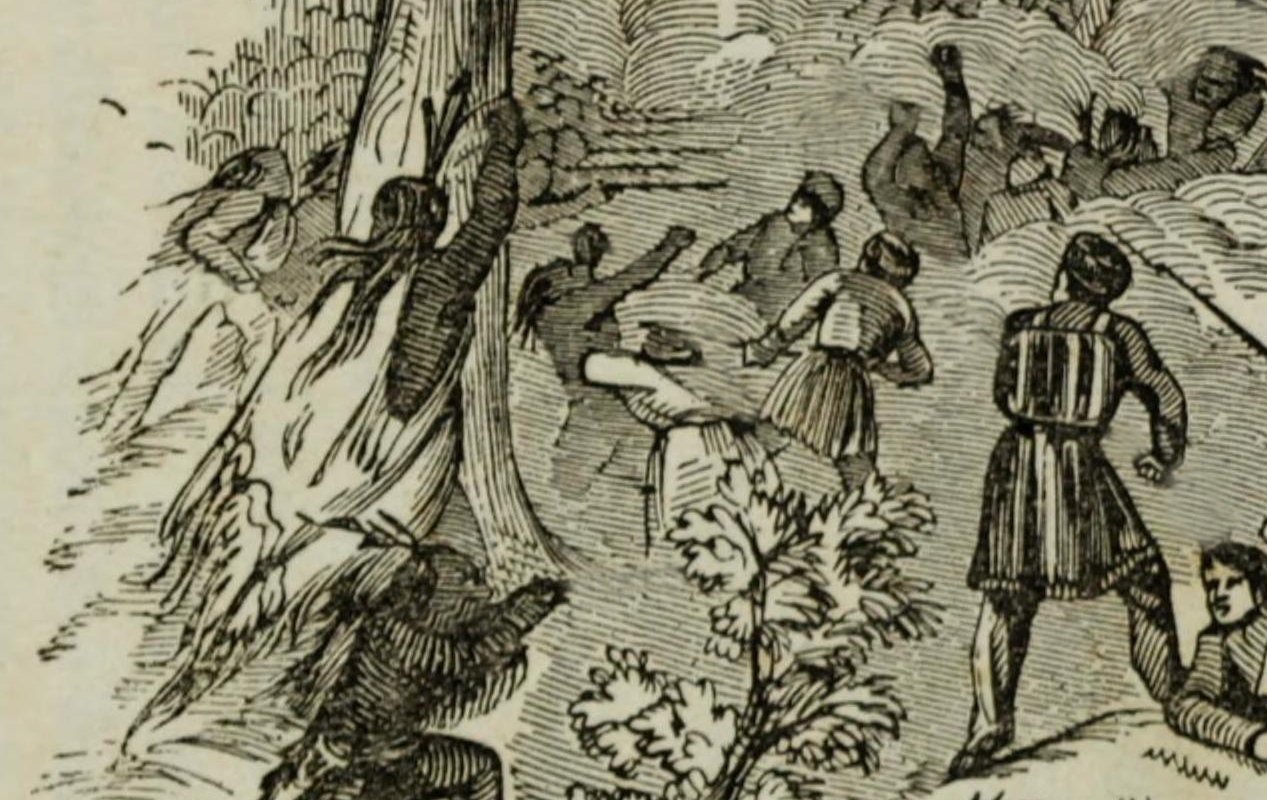 Frost, John, Wikimedia Commons
Frost, John, Wikimedia Commons
A Revolution Looms And A Nation Is Divided
As the American Revolution loomed large in 1776, the Shawnee (along with many other Native American tribespeople) were divided as to whether to fight alongside the British, or on the side of the independence-seeking colonists. It's reported that most Shawnees sought to expel the American settlers from their ancestral homes west of the Appalachian Mountains.
Post-Revolution, The Shawnee Take The Lead In Ohio
After the American Revolution had been won, the Shawnee formed a collaborative relationship with the Miami tribe, a Native American tribe from the Great Lakes region who also spoke Algonquian. The purpose of this relationship was to create a huge fighting force to expel US settlers from the Ohio Valley.
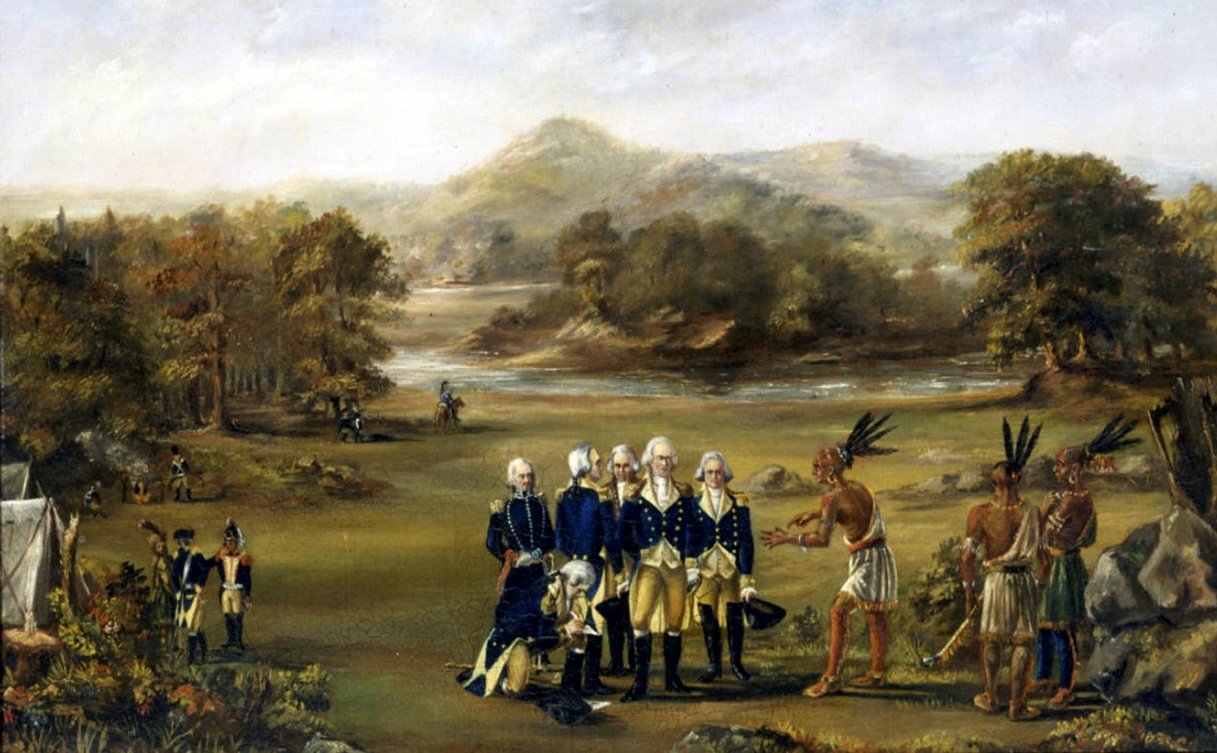 General Anthony Wayne's staff, Wikimedia Commons
General Anthony Wayne's staff, Wikimedia Commons
The Battle Of Fallen Timbers
The final battle of the Northeast Indian Wars, the Battle of Fallen Timbers took place on August 20, 1794. This pitted the Shawnee and their fighting force of some 1,300 men (including British allies) against the American colonists who were over double their troop numbers. Unfortunately, the Shawnee would fall short at the Battle of Fallen Timbers and be forced to sign another disastrous peace treaty a year later.
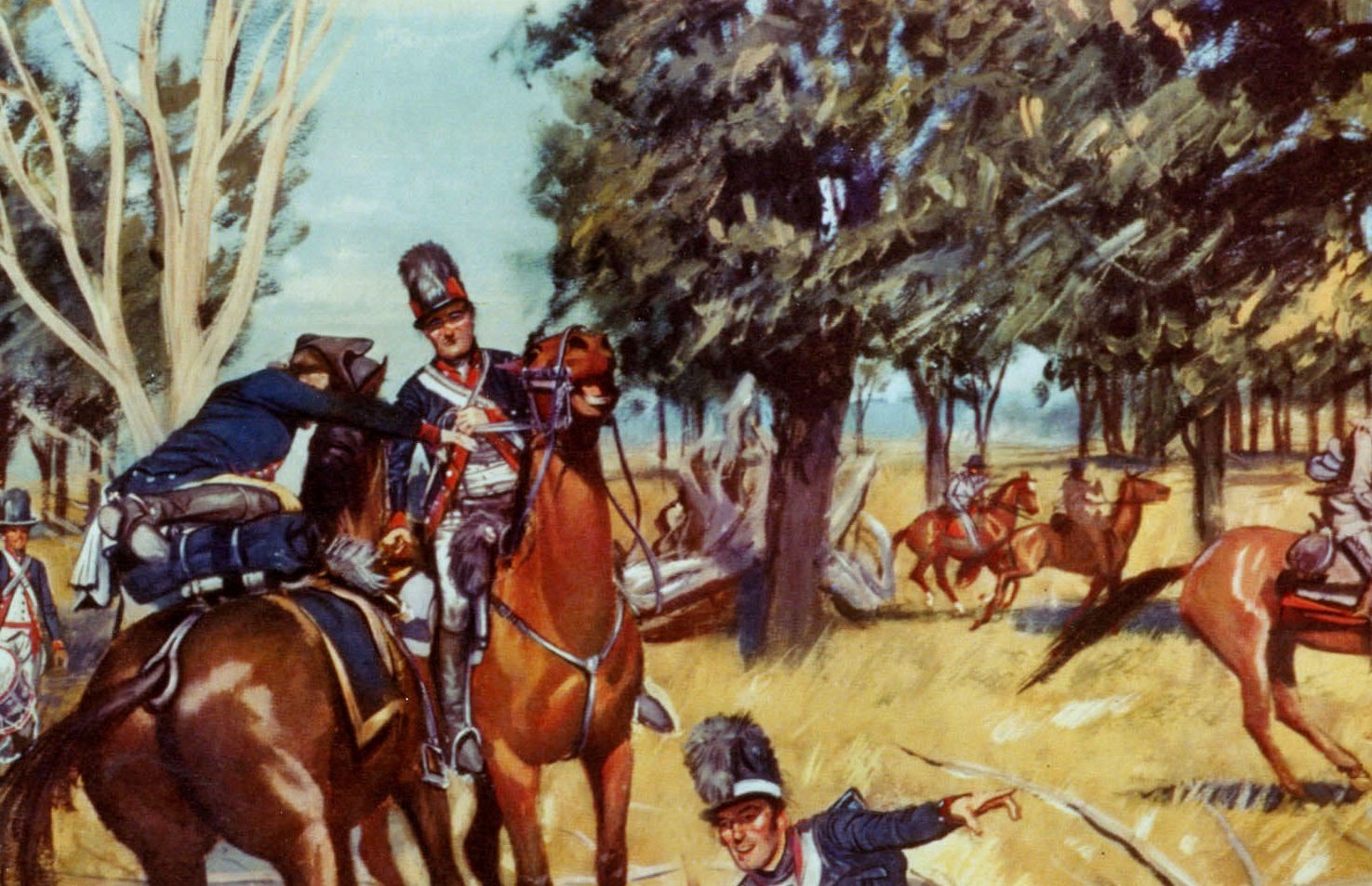 H. Charles McBarron, Jr., Wikimedia Commons
H. Charles McBarron, Jr., Wikimedia Commons
The Treaty Of Greenville Strips Yet More Land From The Shawnee
The Treaty of Greenville was the treaty that ended the Northeast Indian Wars, but it also drew up new borders, distinguishing Native American territory from that free to use by European settlers. In exchange for goods to the value of $20,000, including blankets, utensils, and domestic animals, the tribes ceded vast swathes of modern-day Ohio to the United States.
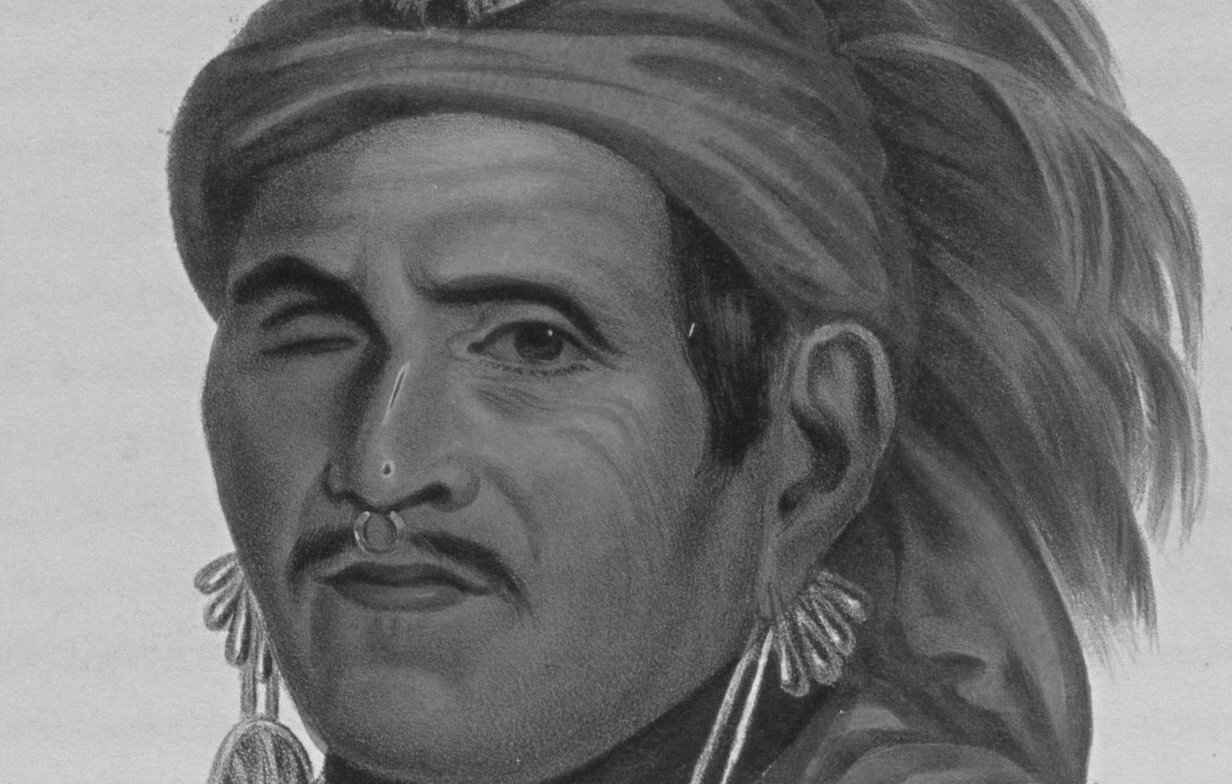 Thomas Loraine McKenney & James Hall, Wikimedia Commons
Thomas Loraine McKenney & James Hall, Wikimedia Commons
Criticism By Shawnee War Chief Tecumseh
Despite eventually ceding to the treaty, the Shawnee's legendary war chief, Tecumseh, sharply criticized other chiefs, like Little Turtle, stating that they "gave away what they did not own". Tecumseh would make a name for himself in the War Of 1812.
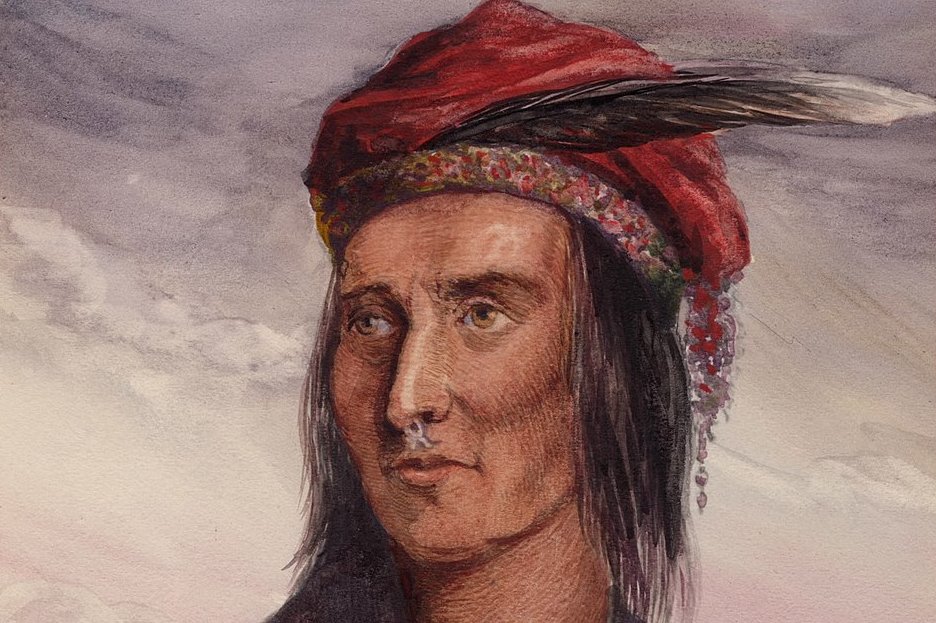 Toronto Public Library, Wikimedia Commons
Toronto Public Library, Wikimedia Commons
Tecumseh's Rebellion And The Treaty Of Fort Wayne
Tecumseh is one of the great warrior leaders in Shawnee history, famous for leading a rebellion against American forces, beginning in 1810, when 400 warriors under Tecumseh's leadership travelled down the Wabash River to meet with American colonel, William Harrison. This meeting was intended to discuss Tecumseh and the Shawnee's concerns about the Treaty of Greenville.
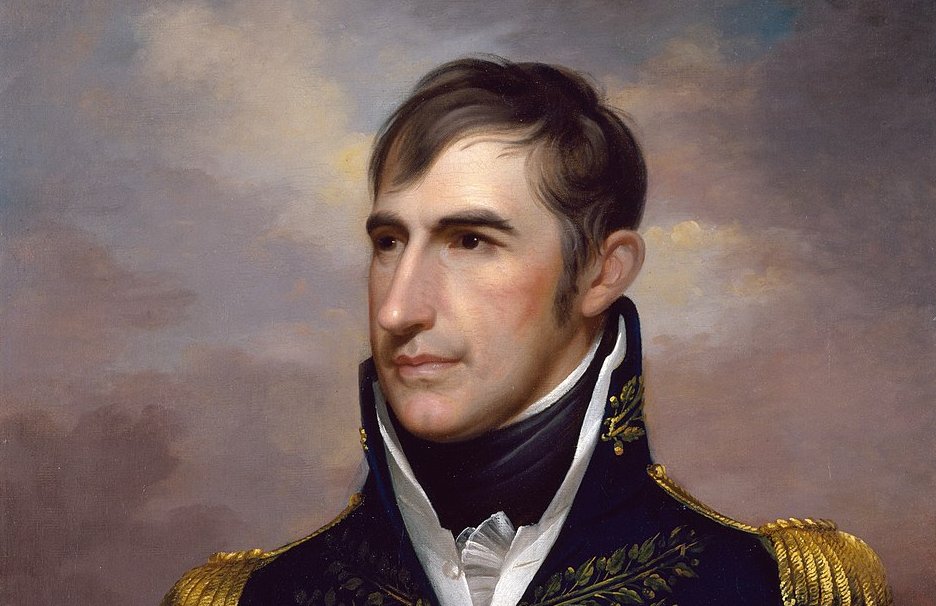 Rembrandt Peale, Wikimedia Commons
Rembrandt Peale, Wikimedia Commons
The Battle Of Tippecanoe
The battles of Tippecanoe and Thames were two pivotal battles in Tecumseh's War. The first was an unprovoked assault by Colonel Harrison's men against Tecumseh's own brother, at a place called Prophetstown, Illinois. This is known as the Battle of Tippecanoe and saw a force of 500 Shawnee warriors defeated by Colonel Harrison's men, while their leader Tecumseh was 1,000 miles away, securing help from British allies in Canada.
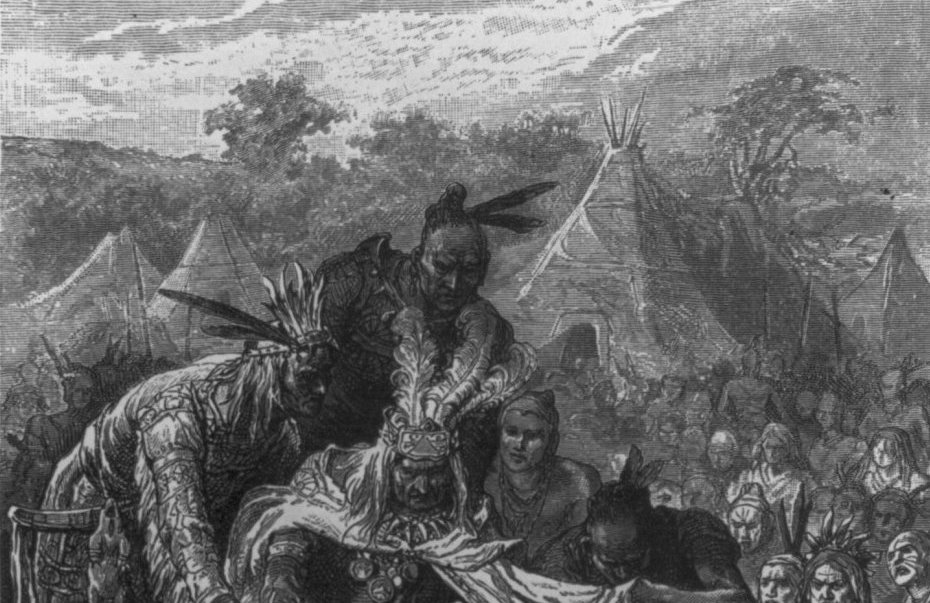 Miscellaneous Items, Wikimedia Commons
Miscellaneous Items, Wikimedia Commons
Tecumseh Joins The War Of 1812
The Battle of Tippecanoe is thought to be one of the primary causes of the War of 1812, with the Americans angry that Britons in Canada had been supplying firearms to the Native American resistance to American colonialism. The War of 1812 was declared a few short months after Tippecanoe. Tecumseh fought on the side of the British.
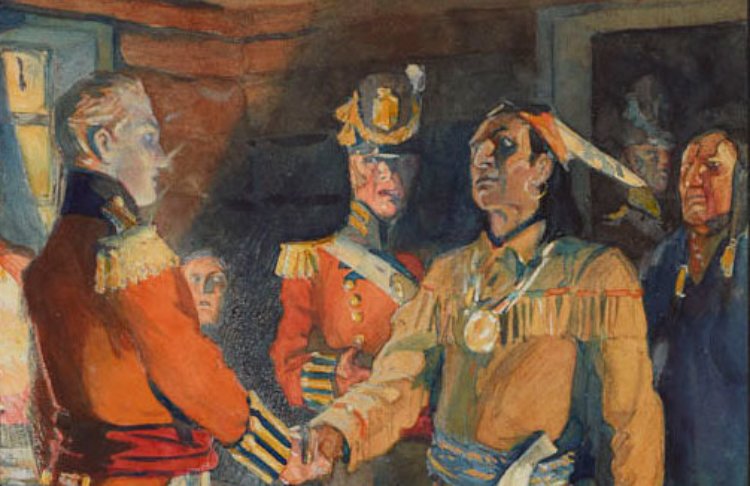 Charles William Jefferys, Wikimedia Commons
Charles William Jefferys, Wikimedia Commons
More Forced Removal Of The Shawnee After 1812
After the War of 1812 was over and Tecumseh had passed at the Battle of Thames, groups of Shawnee began migrating from the United States to Mexico. In Texas, the Shawnee were forcibly removed from their homes but fully compensated for their crops, eventually settling in present-day Arkansas and Shawnee, Ohio, where many Shawnee tribespeople reside today.
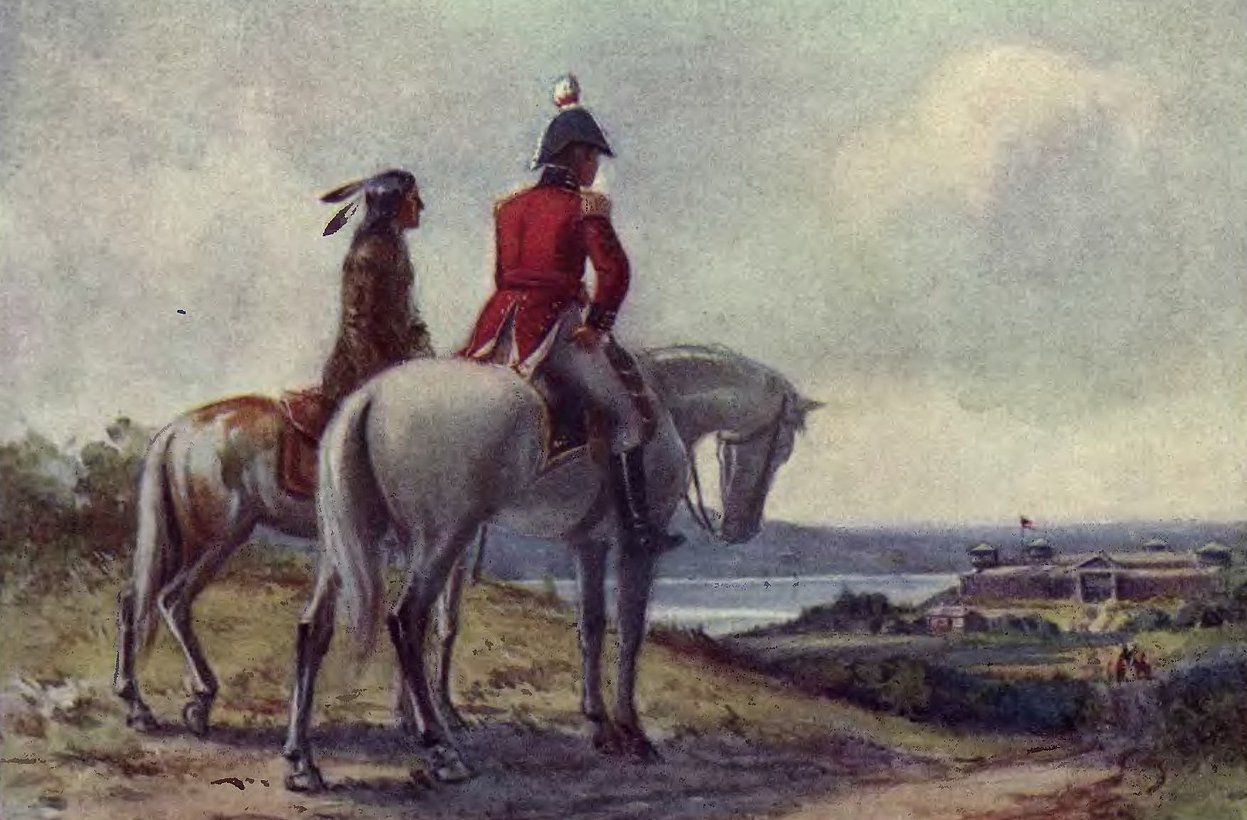 A.M. Wickson, Wikimedia Commons
A.M. Wickson, Wikimedia Commons
40 Years On, Congress Approves $64,000 For Treaty Obligations
After many decades of more forced migrations as the Shawnee were settled and then evicted from one homeland after another, Congress finally decided to give the Shawnee tribes of the United States $64,000 for treaty obligations: annuities, education, and other services.
The "Loyal Shawnee" Side With The Union During The Civil War
Shawnee tribes who'd fled the area during the American Civil War, like Black Bob's warriors who'd fled Kansas, joined the "Absentee Shawnee" in Oklahoma. Those who didn't flee sided with the Union and were called "Loyal Shawnee", regarded at the time by the US Government as part of the Cherokee nation.
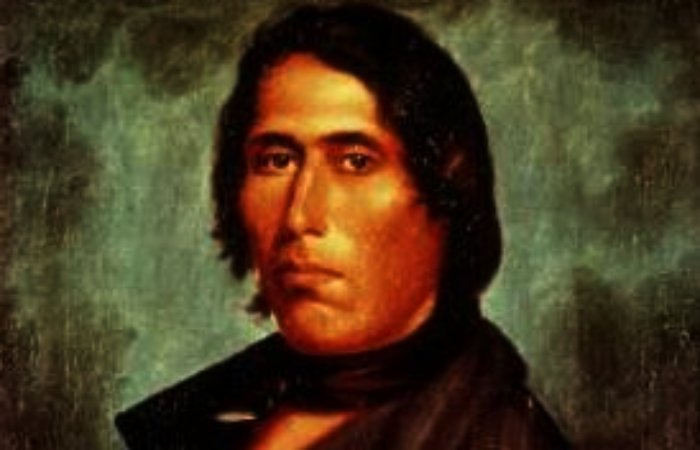 Unknown author, Wikimedia Commons
Unknown author, Wikimedia Commons
The Cherokee Shawnee File For Tribal Status
During the late 20th century, the "Loyal Shawnee", or "Cherokee Shawnee", filed for tribe status with the United States government, being recognized as the Shawnee Tribe, which resided in Oklahoma. The Shawnee Tribe are one of three Shawnee tribes recognized by the United States government.
Tribal Status Of Shawnees In The United States
Only three Shawnee tribes are recognized under American law: the Shawnee Tribe, composed of the Cherokee Shawnee; the Absentee Shawnee Tribe of Indians of Oklahoma, who'd migrated to Oklahoma following the outbreak of the American Civil War; and the Eastern Shawnee Tribe of Oklahoma.
 Deinocheirus, Wikimedia Commons
Deinocheirus, Wikimedia Commons
The Social Order Of The Ancient Shawnee
The Shawnee had a social order and "sachems" who would rule as kings. But, unlike the patrilineal system adopted by Europeans, the Shawnee adopted a matrilineal system: meaning the sons of the brother of the king, by the mother, or sons of the King's sister, would reign after his passing.
The Five Divisions Of Shawnee Society
According to the 19th-century historian Henry Harvey, Shawnee society divided itself into five clans: Chillicothe, Hathawekela, Kispoko, Mekoche and Pekowi. The Chilicothe and Hathawekela were both in charge of band and tribal politics, whereas the Mekoche were the healers and the Pekowi were the tribe's ritual/spiritual leaders. The Kispoko were a fierce warrior sect, from which Tecumseh hailed.
 Lehman and Duval, Wikimedia Commons
Lehman and Duval, Wikimedia Commons
The Shawnee Today In The United States
While fewer than 200 people can speak the Algonquian language of the Shawnee, there are over 8,000 registered Shawnee Native Americans living in the United States, with most living in Oklahoma.
You May Also Like:
The Abenaki People Of North America
The Tale Of The Seminole: Florida's Unconquered Tribe



